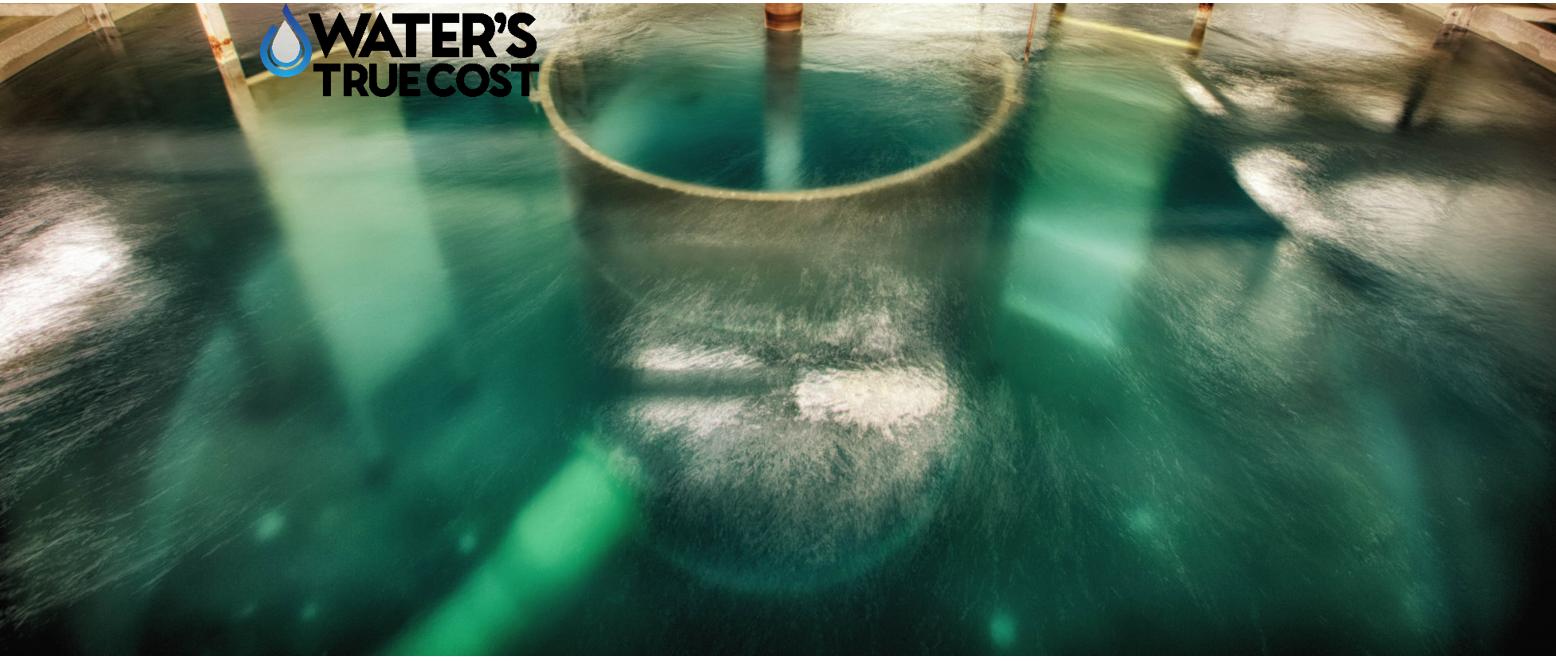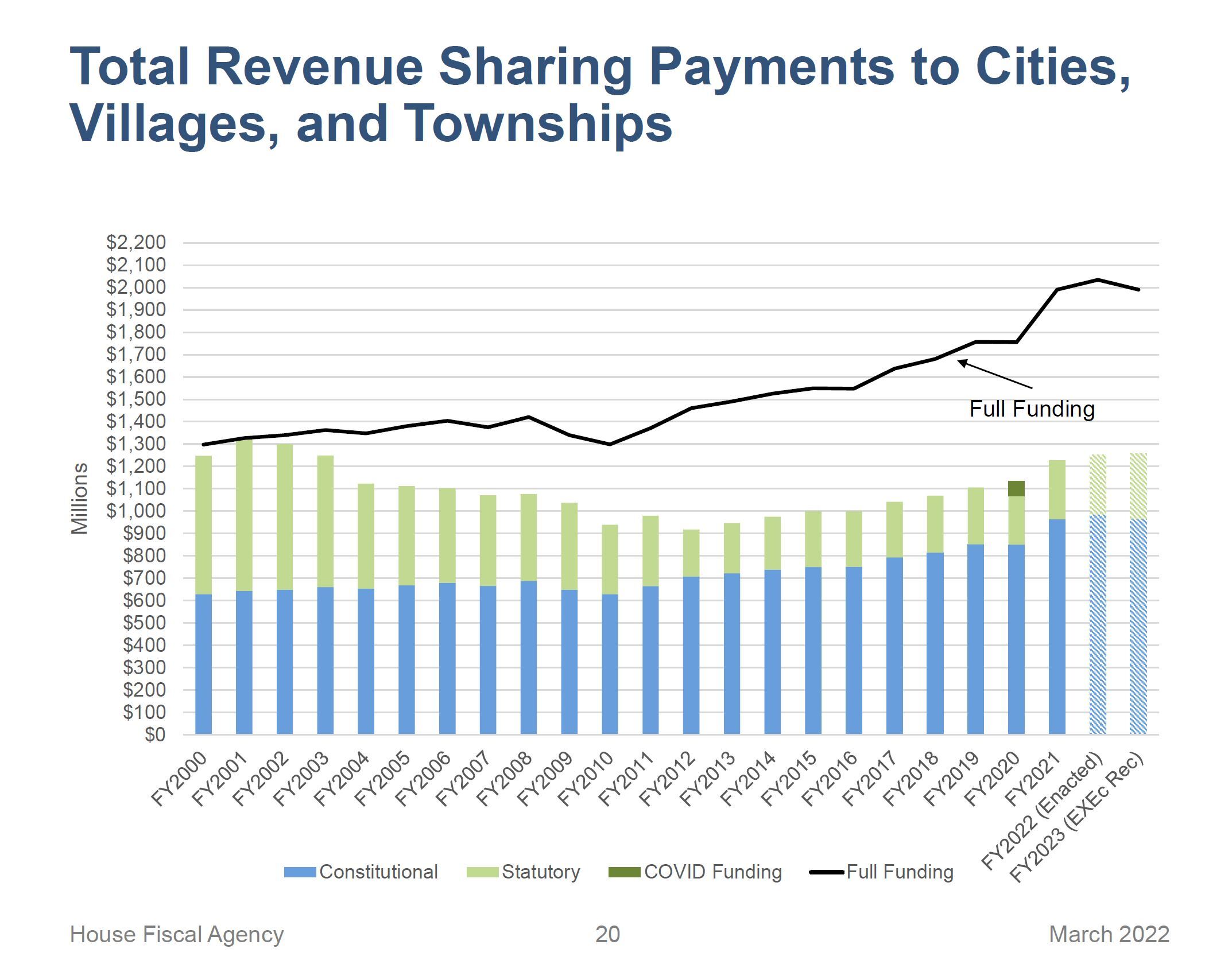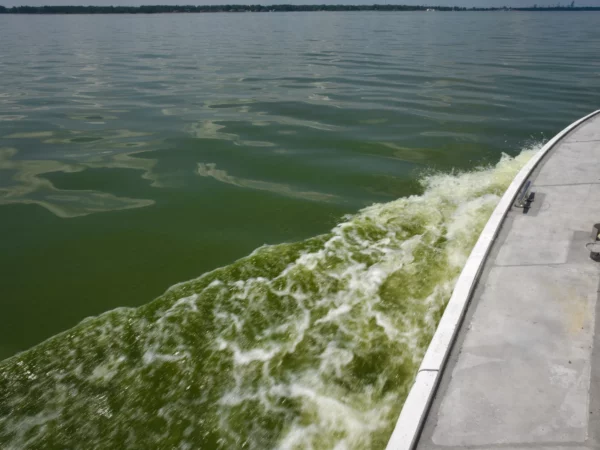
By Natasha Blakely, Great Lakes Now; Lester Graham, Michigan Radio; Kelly House, Bridge Michigan; Brett Walton, Circle of Blue
This story is part of “Water’s True Cost,” a series by the Great Lakes News Collaborative focused on the rising cost of water in Michigan and the various causes leading to the state of water systems today. Find the rest of the stories in the series here.
As the Great Lakes News Collaborative explored in a series of reports this month, Michigan communities have reached an inflection point. After decades of maintenance and managerial failures, water systems across the state have deteriorated to the point of crisis.
And while we’ve laid out a maze of challenges – from shrinking populations to not enough money to a lack of will – the solution to these problems is not so clear-cut.
To the relief of utility leaders, some financial help is coming. Congress passed two big, pandemic-related funding packages — the Infrastructure Investment and Jobs Act and the American Rescue Plan Act — that will funnel tens of billions of dollars into water infrastructure nationwide.
But even that investment is inadequate compared to the problem. And experts say Michigan needs deeper changes to water policy and financing, such as reducing the number of water systems, collecting and cataloging performance data, and ensuring the poorest residents can afford their bills. Without the changes, maintenance backlogs will grow anew.
The Great Lakes News Collaborative journalists asked state and national experts how Michigan could break the bust-to-bailout cycle. Here are five ideas:
Consolidate
While the state’s population remained stagnant for decades, its water infrastructure networks – from pipes to treatment facilities – ballooned as people migrated from cities and small towns to the suburbs.
All that excess infrastructure is expensive to maintain. As the collaborative explored last week, regulators are now encouraging some water utilities to consolidate, a catch-all term that could mean small steps like sharing staff, or big changes like closing decrepit, oversized water plants in favor of buying water from a neighbor.
Manny Teodoro, a drinking water policy expert at the University of Wisconsin-Madison, estimated that as many as half of the region’s water systems could benefit from such a move.
“There’s no other way to do it,” he said. “Either those systems are going to fail, and fail perpetually, or you have to consolidate.”
But under current law, Michigan regulators have little ability to force local communities to engage in such partnerships. And “visceral political distrust,” particularly between leaders of majority-black cities and majority-white suburbs, further complicates consolidation, Teodoro said.
Experts say state regulators, at the very least, should make it harder for municipalities and developers to build a new water treatment facility if a neighboring system has room to accept more customers.
Such a policy may have prevented Benton Charter Township’s 2011 secession from the Benton Harbor water system — a move that financially hobbled Benton Harbor’s water revenue, and left Berrien County with three separate treatment facilities within a 5-mile area.
Officials with the Michigan Department of Environment, Great Lakes and Energy are doing a line-by-line review of Michigan’s Safe Drinking Water Act in hopes of preventing future crises like the revenue shortfall in Benton Harbor that coincided with high lead levels in drinking water. State officials are likely to suggest new policies to discourage water system sprawl.
“I would like to see us stop building new infrastructure alongside other publicly funded infrastructure,” Kris Donaldson, EGLE’s clean water public advocate, said in March.
Rate restructuring

Experts recommend that water systems incorporate steady, gradual increases in water rates rather than going a decade or more without raising rates, only to need a dramatic increase when a pump breaks. (Photo Credit: Lester Graham/Michigan Radio)
Water rates are rising fast as Michigan water systems try to recover from years of inadequate infrastructure investment while also confronting inflation.
That poses a growing problem for residents, whose wages have not been keeping pace.
“That’s where it becomes important to structure the rates, so that low-income people are not getting slammed,” said Erik Olson, senior strategic director with the Natural Resources Defense Council.
Low-income families could be helped with more expansive assistance programs, fewer fees for overdue bills and money to fix plumbing leaks in older buildings.
The American Water Works Association offers guidance to water systems for how they should set water rates: They need to be high enough to cover day-to-day operations, plus big-ticket items like replacing water mains every 50 years.
The degraded state of Michigan’s water infrastructure, which received a D grade last year from the American Society of Civil Engineers, makes clear that many communities have not paid heed.
“Too many small systems haven’t been charging accurate rates for the longest time because city council, villages, township boards, you know, a lot of times some think they’re doing the right thing by not raising rates and in the long run that hurts them,” said Tim Neumann, executive director of the Michigan Rural Water Association.
Neumann said towns should incorporate steady, gradual increases rather than going a decade or more without raising rates, only to need a dramatic increase when a pump breaks.
More state and federal assistance
Some water advocates have called for more financial help from state and federal governments.
Generations ago, the country’s water and sewer infrastructure was built with massive federal subsidies. By 1976 the federal government was spending more than $20 billion a year (in 2022 dollars) on water and wastewater utility infrastructure.
That’s declined to about $3 billion a year. Many communities were not prepared to offset that loss, said John LaMacchia of the Michigan Municipal League.
“A lot of communities that were putting in systems and improving their systems 30, 40, 50 years ago, many of them did a cost analysis based on what the feds included in that, what the state included in that,” LaMacchia said.
The federal funds that remain – like the Drinking Water State Revolving Fund – are frequently inaccessible to the communities that need it most.
“Our interest rates haven’t been that competitive with what (local water providers) can get on the outside of the state,” said Eric Oswald, director of the Drinking Water and Environmental Health Division of EGLE, which has discretion over how to distribute the federal dollars in the state.
Oswald said EGLE and Michigan legislators are working to change that. Lawmakers are considering legislation that would require EGLE to adjust interest rates on an annual basis so they’re more competitive. The package of bills would change requirements regarding loan application information, reducing the burden on municipalities.
The federal Infrastructure Investment and Jobs Act, signed in November, could also help level the playing field for communities that have struggled to access funds. It mandates that nearly half of the act’s drinking water, sewer and lead pipe replacement funds be provided as grants and forgivable loans to disadvantaged communities.
Getting creative
Michigan water system managers frequently bemoan rising water treatment costs to meet new regulatory standards, such as PFAS limits that took effect in 2020. Olson, with the NRDC, suggested that polluters — not water customers — should shoulder those costs.
“Sometimes the water systems are having to treat for pollution that they have nothing to do with, that upstream contamination problem created by upstream polluters,” Olson said. “And allowing water systems to recover treatment costs from the upstream polluters is also an important part of the need.”
Another creative method of raising funds for upkeep and operations might be to sell data.
Detroit and Ann Arbor are experimenting with smart stormwater systems. They’ve found that sensors and automated valves help make their systems more efficient, saving money. Sensors can help prevent stormwater pipes from overflowing by directing high-volume surges to parts of the system with spare storage capacity. That data also helps determine where best to spend construction dollars. An expert at the University of Michigan said data from drinking water systems could have value as well.
Companies might want to buy that data. Pipe makers, construction companies, fire hydrant manufacturers all might find value in the data sensors can gather. Even companies interested in how a population behaves could be interested in city-owned water-use data.
“The U.S. city and village and town managers think about infrastructure as a thing that they owe money on, not as in a thing that they own and potentially can exploit and figure out new models and new financial instruments for,” said Peter Adriaens, professor of environmental engineering, finance and entrepreneurship at the University of Michigan.
“Is it an albatross around your neck or is it actually an opportunity to create new business models around that?”
One of the most valuable ways to use that data is to show bond rating agencies the durability of a water system or sewer system. Data can provide transparency and reassurance. That means bond rating companies can better determine investment risks, which could translate into lower interest rates for a municipality.
“That data monetization becomes a new revenue stream that can actually pay for the financing. It can pay for the loan,” Adriaens said.
That’s great for big systems. Unfortunately, it will not be as helpful for small towns. They’re not going to have enough data to matter. Adriaens suggested that state governments consider shifting state dollars from cities benefiting from selling data to smaller cities that are left out.
Tax reform

Michigan revenue sharing payments (Image from Michigan House Fiscal Agency)
The state of Michigan has indirectly reduced the money that municipalities can spend on water and wastewater infrastructure through a series of changes in tax revenue distribution.
The Headlee Amendment, Proposal A and other alterations in how tax money is doled out to communities have combined to reduce municipal revenue.
One of the biggest cuts has been in the amount of sales tax dollars the state shares with municipalities in a process called revenue sharing. This year alone, Michigan municipalities received $800 million fewer state dollars than they would have received under old formulas for sharing state tax revenue.
“That’s compounded the billions and billions and billions of dollars over the last decade, plus,” noted LaMacchia of the Michigan Municipal League.
Cities have instead been relying more on voter-approved millages and higher rates for water and sewer bills to try to keep city services going.
“The problem is that they have to turn to more regressive forms of property taxes, fines, fees and other charges, which really disproportionately harms families with low incomes and our Black and brown communities,” said Rachel Richards, fiscal policy director with the Michigan League for Public Policy.
Municipalities believe the problem can be solved by simply restoring revenue sharing to previous levels and stopping the practice of using the local share to plug state budget holes. But at present, no such proposals are on the table in Lansing.
What now?
Each of the potential solutions tackles one angle of the problem. But Michigan’s water crises are a sprawling web of different but interconnected issues. They might need more than one solution, or even all of them combined. Michigan’s water infrastructure problems need hard decisions and work to get to a point where public utilities can safely, sustainably and affordably support our drinking water needs.
Catch more news at Great Lakes Now:
Water executive tells cities to “get creative” when it comes to replacing lead service lines
Nonprofit report points to outdated Clean Water Act for the miles of polluted rivers across the U.S.
Featured image: Michigan’s aging water systems are increasingly expensive to operate and can pose safety risks, raising questions about whether they should be consolidated, among other options. (Photo Credit: J. Carl Ganter/Circle of Blue)
1 Comment
-
A big component of the water problem is related to agriculture, and also used of domestic water for gardens, sanitary uses etc.
I would like to see renewable energy used to make water suitable for agricultural uses. I would also like to see such energy used to make water potable for drinking. This could be much more effective that the huge chemical input currently required to make water potable.
I would also like to see incentives and novel thinking to use domestic grey water for watering gardens etc, flushing toilets and similar uses.
I’d also like to see encouragement of composting toilets. Good, odorless systems are made for RVs and boats. Why not homes?
Imagine a world where all toilets were composting. A weekly honey wagon would pick up composted waste for fertilizer and other uses, just like today’s recycle and compost pickup. Imagine, as a result, our sewage system carrying only grey water and storm water to be converted back to drinking water. Imagine towns being water-independent! Wow.
We need the same engagement iof minds and ideas that are thinking about energy to be applied to water. There is much we can do with existing technology. We need the will…
You may say I’m a dreamer
But I’m not the only one
I hope someday you’ll join us…




